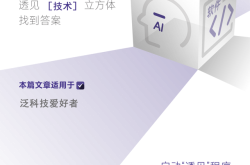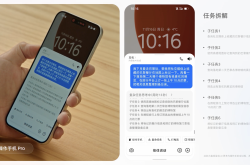"Competent upon Arrival: Baidu Intelligent Cloud Unveils World's First Batch of AI Digital Employees
![]() 08/06 2025
08/06 2025
![]() 445
445
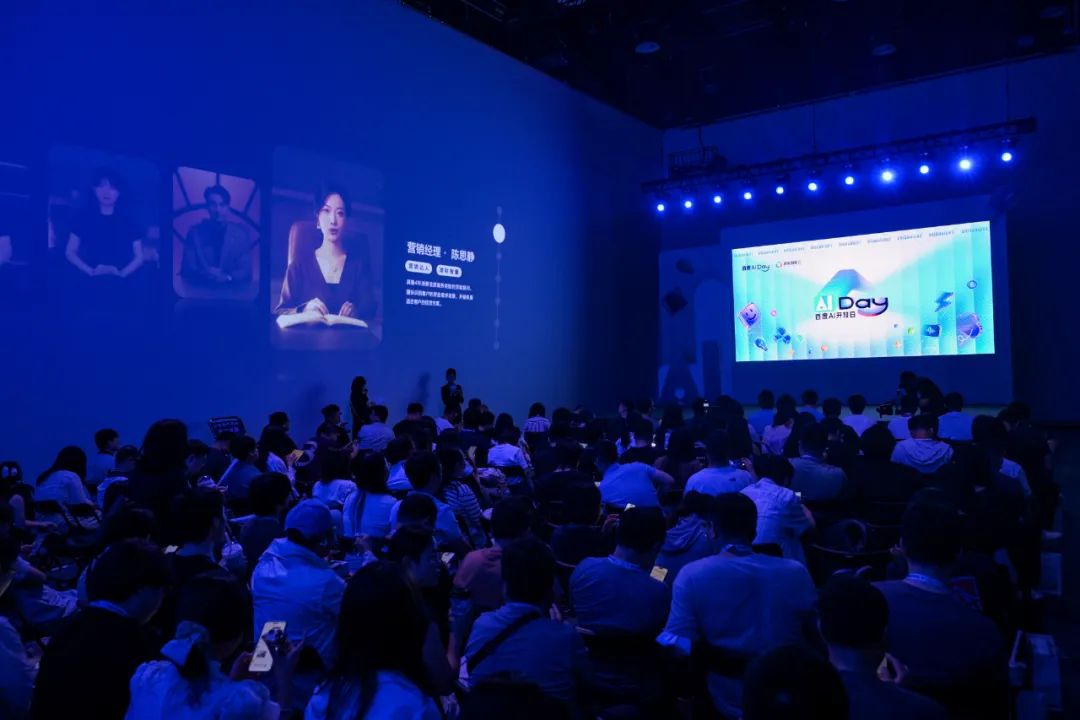
Image Source: Event Venue
Baidu Intelligent Cloud elevates AI digital employees to a new level.
On August 5, at the Baidu AI Day Open Day venue, Baidu Intelligent Cloud introduced the world's first batch of AI digital employees, spanning crucial business roles such as marketing managers, repayment assistants, car sales, promotion specialists, product managers, course consultants, and recruitment specialists. Leveraging Baidu Intelligent Cloud's cutting-edge AI full-stack capabilities, these digital employees are "plug-and-play," ready to start working immediately upon deployment.
Just a month prior, Baidu Intelligent Cloud had launched "Product Manager" Hu Xinyue and "Car Telesales" Zhang Yuxin. Building on this foundation, Baidu Intelligent Cloud has established an AI Digital Employee "Growth Alliance," providing low-barrier, high-compatibility AI agents to thousands of industries, charting a new growth trajectory.
Brand-new AI digital employees are operational from day one
The transition from a single digital employee to a group signifies more than just a numerical increase; it represents a release of accumulated capabilities.
During a post-conference exchange, Shi Zheng, General Manager of Baidu Intelligent Cloud's Smart Marketing Products, told Tang Chen that the expansion in the number of digital employees is driven by the specific display needs of business scenarios. In the future, more digital employee roles will be introduced to enable customers to intuitively understand their capabilities and the practical challenges they can address for enterprises.
My experience revealed that, unlike traditional AI tool avatars, Baidu Intelligent Cloud's digital employees are full-fledged "Agents": Anthropomorphic interface (avatar image) × Business agent (core), inherently possessing the advantages of "measurable value, high-efficiency closed loop, and full-process automation."
At the image level, digital employees achieve lifelike expression through Baidu's avatar technology, lowering the interaction threshold;
At the core level, digital employees deeply integrate agents into enterprise service and marketing scenarios, completing the closed loop of "autonomous decision-making - service or marketing interaction - insight feedback," possessing both interactive experience and business result delivery capabilities.
For instance, the newly launched "Recruitment Consultant" Yuan Yuheng is a digital employee avatar of a recruitment consultant. His personal tags are "high-potential mining" and "precise matching," focusing on discovering high-potential talent in AI product directions.
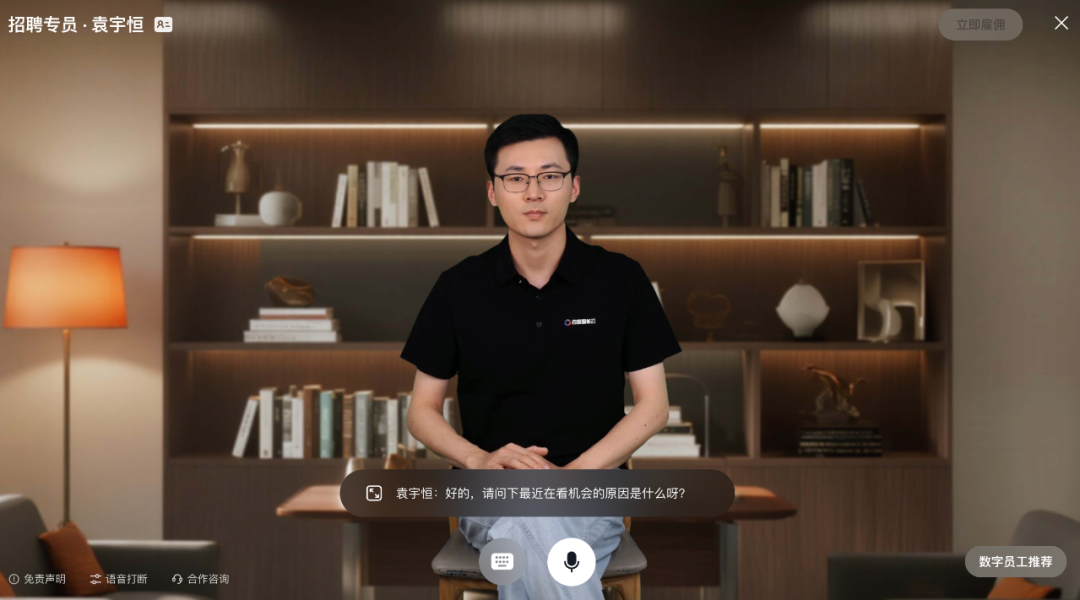
Image Source: Digital Employee Yuan Yuheng Screenshot by Tang Chen
Conversations with him support voice (Chinese, English, and other languages) and pure text input. I posed multiple questions that deviated from the usual script or even conveyed non-industry-specific information, yet Yuan Yuheng accurately "read" the candidate's intended meaning and captured my underlying message, preparing to guide the conversation for the next round.
For example, I deliberately tested him with templated questions such as "team size," "job location," "compensation and benefits," and "reporting leadership level" to see if he would "deviate" like a large model, reasoning and associating mechanically, and providing "illusory" answers.
Surprisingly, Yuan Yuheng demonstrated high professionalism. In his domain of AI, he continuously guided candidates to provide more information matching the position, such as whether they have AI-related work experience, to help ultimately assess the candidate's value.
More critically, the "pseudo-intelligence" issues commonly criticized in avatars, such as expression management, gesture speed, conversation rhythm, delayed stiffness, etc., are nearly non-existent in "Yuan Yuheng" and his counterparts. When working, they "use their brains, react quickly, and are like real people," especially in terms of naturalness, which is infinitely close to the performance of real individuals.
Throughout the process, they are not cold, emotionless tool avatars but more like colleagues and partners who deeply understand business processes and are familiar with business pain points, possessing both image and warmth while deeply engaged in business flows.
For real HR personnel, having such an AI colleague who can communicate with candidates in batches upon arrival, realizing automatic flow from screening to recommendation, practically eliminates 80% of communication chores, significantly enhancing work efficiency and internal and external trust.
However, one current limitation, as I learned from the conversation with "Product Manager" Hu Xinyue, is that this batch of AI digital employees only supports Mandarin, and the use of dialects still needs further optimization. When I occasionally asked questions with a hometown accent, she could only apologize and say, "I don't quite understand what you mean."
From "Avatars" to "Digital Employees," It's a Significant Difference
Currently, enterprise marketing service demand is growing rapidly. According to the latest data from Frost & Sullivan, the size of China's AI marketing market has grown from 20.9 billion yuan in 2020 to 53 billion yuan in 2024, with a compound annual growth rate of 26.2%, and is expected to reach 132 billion yuan by 2029.
Affected by this, the avatar market also presents the coexistence of "structural explosion" and "gradual stability."
Previously, there was a consensus in the industry that in 2025, AI Agents would evolve from "tools" to "relationships," and as the most mainstream form of AI application, they would also usher in a moment of explosion. However, in the core fields of agent implementation - marketing and service - traditional AI tools, including avatars, need to break through two major bottlenecks to bridge the gap between the expansion of marketing demand and the landing of AI applications:
First, system silos fragment decision-making links. For instance, within the business, service, marketing, and data modules operate independently, resulting in fragmented user behavior data recovery and difficult traceability of the conversion path, with ROI (return on investment) only able to be estimated through fuzzy calculations.
Second, mechanical interaction erodes brand trust. Traditional AI tools often fail to answer questions correctly, and every unfruitful communication with users consumes brand trust. For example, in common e-commerce scenarios, intelligent customer service can only mechanically repeat set phrases like a recorder. Customers have to repeatedly ask to "transfer to a human" to activate human service. This inefficient communication only results in negative evaluations of the brand.
In this process, large model-driven agents gradually break through the limitations of traditional AI tools, achieving cognitive upgrades that "get smarter with use" through task automation (actively breaking down goals and scheduling resources) and dynamic evolution (continuously iterating strategies during interaction).
As an advanced form of agents, digital employees have undergone a qualitative transformation from AI tools to business partners. Compared to traditional avatars, their capabilities are personified, converting abstract business capabilities into a dialoguable avatar image, establishing a visual emotional connection; experience is capitalized, precipitating industry know-how (skills) into expert decisions that can be used out-of-the-box; at the same time, job experience is encapsulated, embedding them in the organizational structure as "digital employees," directly addressing the core enterprise demand of "investment must yield results."
We can also consider that avatars focus on the enterprise's "virtual facade," responsible for being remembered; digital employees focus on the enterprise's "result output," responsible for delivering tangible business results.
In other words, there is a fundamental difference between avatars and digital employees. Shi Zheng also reiterated the same meaning to Tang Chen. In terms of interactive performance, avatars are more like image carriers, such as the Luo Yonghao avatar, which is an anthropomorphic interaction carrier that generates virtual images through multimodal technology (voice/expression/movement), primarily solving the problem of "how to express" and is mostly used in scenarios such as live streaming sales, virtual customer service, and cultural and entertainment IPs (such as virtual idols).
However, digital employees are business decision-makers or executors, thinking and collaborating like humans, integrating RPA (Robotic Process Automation) and AI decision-making capabilities, primarily solving the problem of "how to deliver results." They will replace human repetitive labor in scenarios such as financial services, intention screening, lead identification, education customer acquisition, and human resources assistants.
In the future, digital employees will also evolve towards multi-agent collaboration.
Based on years of AI application landing practice, Baidu Intelligent Cloud defines AI digital employees as follows: They are a new generation of AI productivity, AI applications developed based on large model agents and industry knowledge data, providing out-of-the-box product capabilities for different stages of the enterprise marketing journey, delivering not just AI tools but business benefits or results to enterprises.
At the same time, Baidu Intelligent Cloud believes that AI digital employees are enterprise-level partners that deeply integrate "human-level communication capabilities" and "business decision-making intelligence." AI digital employees should possess three characteristics: understanding the business (industry data + their own practice), delivering results (not only being able to make decisions but also directly delivering results), and being evolvable (large model capabilities empowering self-iteration).
The proposal of the definition of digital employees indicates that this track is maturing, with Baidu Intelligent Cloud in a leading position, also providing executable standards and guidance for newcomers.
According to my understanding, currently, Baidu Intelligent Cloud's digital employees come pre-installed with over 100 industry scenario templates, covering mainstream industries such as education, fast-moving consumer goods, automobiles, and finance, supporting rapid activation of business scenarios.
This year, it will also focus on expanding digital employee scenarios in the four major industries of education, automobiles, finance, and fast-moving consumer goods, emphasizing three key tasks: industry benchmark co-construction, dedicated model development, and ecological platform integration.
Why Baidu Intelligent Cloud
In a sense, digital employees are products nurtured by Baidu Intelligent Cloud and represent the best practice of enterprise-level agents in the field of service marketing.
The homepage of Baidu Intelligent Cloud's official website introduces digital employees as follows: Driven by a trillion-level large model, AI digital employees restructure enterprise productivity, provide highly anthropomorphic intelligent services, and help enterprises improve marketing conversion and service efficiency.
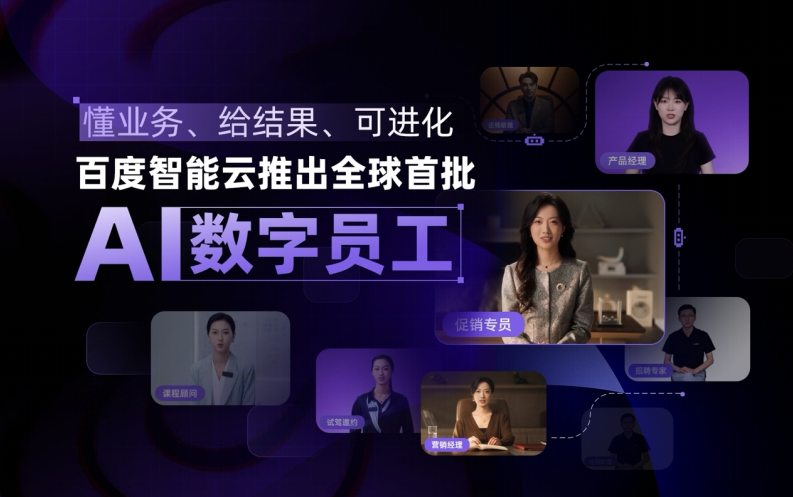
Image Source: Baidu Intelligent Cloud Digital Employees
This also means that as more people begin to complete work with "one sentence," the value of AI digital employees will also be amplified. With practical feedback from more enterprise users, AI digital employees will also become self-evolving, fully perceptive, and super-collaborative "digital life forms," and even continue to break through towards reconstructing the boundaries of productivity and creativity.
This is attributed to the robust technical foundation built by Baidu Intelligent Cloud in the process of AI application landing, primarily manifested in:
First, a human-like "super dual-brain" architecture, namely an intelligent decision-making "brain" and a realistic interaction "cerebellum": The former integrates command understanding, emotion and intention recognition, and multi-dimensional knowledge retrieval, accurately replicating business processes through the "intention canvas." The latter provides ultra-realistic 4K avatar images and ultra-realistic human-computer interaction experiences, including end-to-end speech and language large models, enabling digital employees to achieve response without perceptible delay.
Second, multi-agent collaboration: In marketing and service processes, agents such as lead mining, user segmentation, intelligent customer service, outbound call execution, and customer insight deeply collaborate to form a dynamically optimized closed loop. This mechanism allows digital employees to not only accurately respond to inquiries but also promote cross-departmental collaboration, significantly improving business processing efficiency and professionalism.
Third, the accumulation of industry SOPs (Standard Operating Procedures) builds professional barriers: Deeply integrating the core business logic of fields such as education, finance, automobiles, and fast-moving consumer goods (such as renewal strategies and risk control rules), and leveraging the combination of "Baidu Intelligent Cloud + enterprise internal systems" for general knowledge bases and enterprise-specific knowledge reuse. At the same time, through a fully self-developed dialog simulation system, digital employees possess self-evolution capabilities. The longer the deployment time, the higher the professionalism of AI digital employees, forming a compounding effect of "getting smarter with use."
This actually also answers a key question: Why were the world's first digital employees pioneered by Baidu Intelligent Cloud?
According to Shi Zheng, Baidu Intelligent Cloud has established core capability barriers in the avatar market, with the dual upgrades of "shell anthropomorphism" and "brain intelligence" driving AI to evolve from a "tool" to a "business partner."
Tang Chen was informed that a profound comprehension and systematic packaging of vertical scenarios serve as the benchmarks distinguishing industry competitors. By integrating avatar-level human image technology with large models' deep insights into intricate scenarios and industry SOPs, Baidu Intelligent Cloud's digital employees exhibit highly anthropomorphic interaction capabilities, enabling them to respond precisely to user needs in real-world business scenarios.
For instance, within just 15 days of the digital employee product's launch, there was a surge of 70% in official website visits, with lead collection doubling that of traditional models. Their ability to handle multi-round conversations with immediate interruptions, capture customer needs in real-time, and follow up in complex scenarios has been implemented and applied across multiple industries. In the insurance industry, for example, telemarketing digital employees have assisted a major insurance group in short-term insurance marketing, nearly doubling the intention rate.
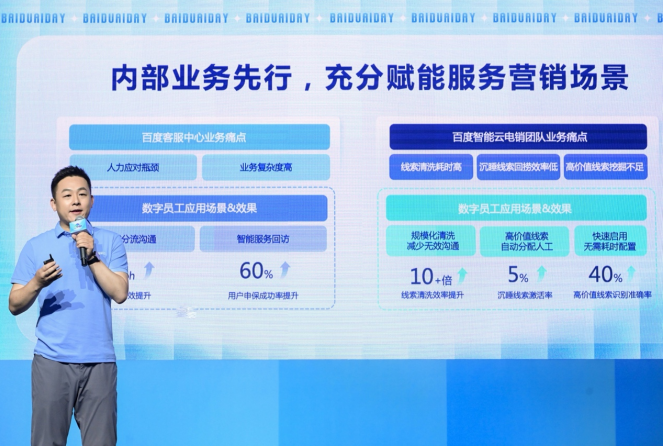
Image source: Event venue
In fact, prior to the launch of these digital employees, Baidu had already tested them within internal operations. Since initiating the Internet User Rights Protection Plan in 2013, Baidu's Protection Team has encountered common customer service challenges, such as complex service processes, standardized reception and communication that demand substantial energy in rectifying repetitive errors, and the cultivation of professional talent.
Baidu Intelligent Cloud was one of the pioneers in integrating AI technology with customer service scenarios. Building on this foundation, digital employees have profoundly refined industry-standard SOPs and vertical knowledge bases, pre-installed professional service capabilities, and achieved rapid deployment and continuous evolution right out of the box.
For example, addressing the online service challenges prevalent in the industry, Baidu Intelligent Cloud's digital employees provide stable and professional online services 24/7, effectively freeing humans from repetitive basic tasks and allowing them to focus on high-value case evaluation and dispute mediation. Additionally, the intelligent communication summaries generated by Baidu Intelligent Cloud's digital employees further assist humans in enhancing decision-making efficiency and mediation accuracy.
Leveraging multimodal interaction capabilities, including voice, text, and images, along with the innovative "dual-brain architecture" (large model + small model), Baidu Intelligent Cloud's digital employees can accurately identify user intentions and emotions, ensuring that every interaction response is both professional and precise.
Data indicates that after deploying digital employees within Baidu's Protection Team, service efficiency has achieved significant growth: timeliness has increased by 18 hours, and the success rate of user applications for protection has risen by 60%.
As this new generation of AI productivity, digital employees, begins to think and collaborate like humans, Baidu Intelligent Cloud's earlier prediction appears especially prescient: The era of agent employment has dawned, and your first AI colleague is ready and waiting.


